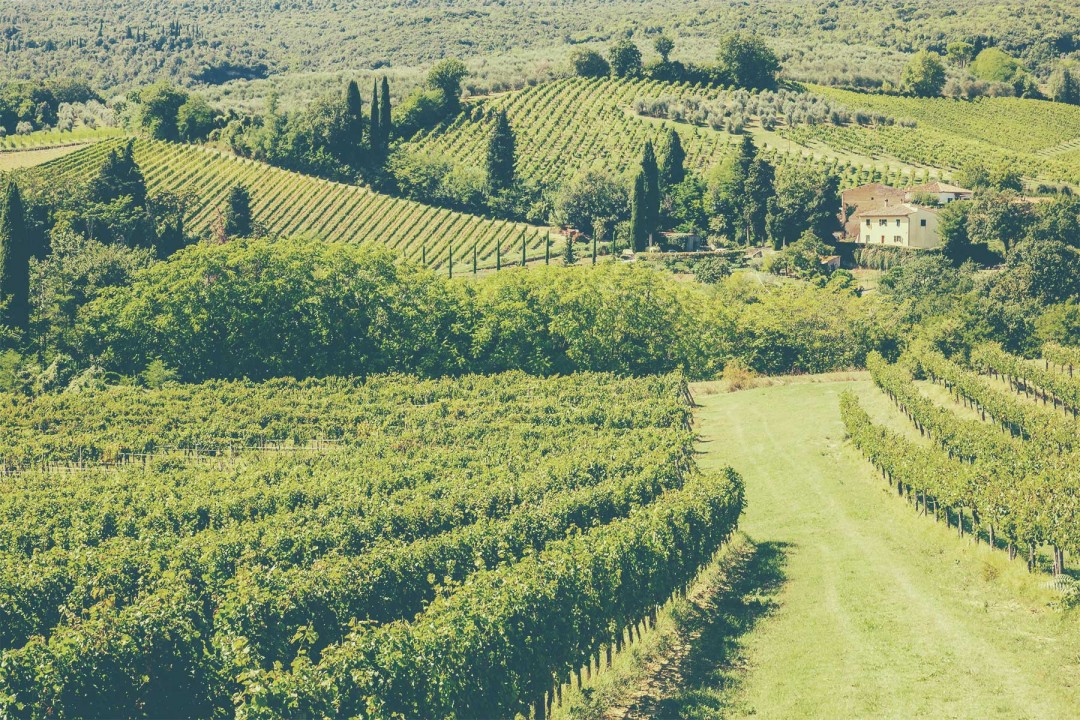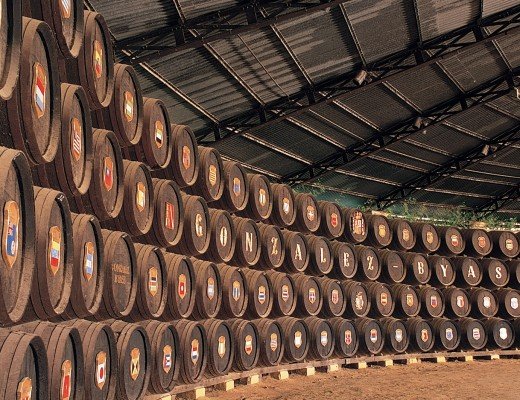Italy, as you may know, is the largest wine producer in the world. Wine is literally made in every region of the country….a boast regularly made by our American friends….but who was actually tried one of the famed Tempranillos of Texas? And while we might naturally be inclined to praise the Romans for their industry, it was actually the Etruscans and Greeks that started vineyard cultivation here. It is perhaps due to this long history and proud heritage, that the Italians have maintained a rich diversity of indigenous grape varieties. Roughly 350 different grapes have official, recognized status, and there are said to be another 500 or so in production. So while you may know and love Sangiovese, Nebbiolo, or the grapes in Valpolicella blends…how many of you are familiar with Sagrantino, Falanghina or Negroamaro?
At the Italian Wine Trade Commission tasting in Montréal last week, I was fortunate to taste a variety of the weird and wonderful lesser-known Italian grapes and blends. Most of the wines are sadly not imported into Canada yet, so I won’t cite the winemakers. I will however list some of the more interesting grapes and regions that you should look out for. Next time you head to your local store, ask the staff to dig you up one of these to impress your friends (or make them think that you are an obnoxious wine geek):
Whites
Pallagrello Bianco
An obscure grape grown in the Campania region (the front part of the ankle in the Italian boot). It might be a stretch for your average liquor store to find you one of these, but you’ll feel wine savvy asking! This grape is often found in blends; sometimes as a single varietal. On its own, Pallagrello is often likened to Viognier; though styles can vary depending on ripeness and oak treatment. I tried an unoaked, medium bodied example that was fresh and lively, with bright lemon aromas, subtle floral and peach undertones; showing good balance and a clean finish. This is a fairly simple, every day style of wine; perfect for summer aperitifs when you are sick of the same old Pinot Grigio and Sauvignon Blanc!
Falanghina
This might be a little more familiar territory for some. It should be fairly easy to find one or two to try in bigger liquor stores. This is also a Campanian grape, sometimes compared with Pinot Grigio, though the best examples show a little more complexity. I sipped my way through a few of these, and found the best ones were medium bodied, with crisp acidity and moderate alcohol. Aromas of apple, citrus blossom dominated, with lovely spice and mineral touches and the characteristic Italian bitter almond note on the finish. Current SAQ & LCBO prices tend to range from 15 – 20$.
Arneis
This grape is grown in the Piedmont region, home to the celebrated Barolo and Barbaresco reds. It is most commonly found in DOCG Roero and DOCG/ DOC Langhe white wines. Arneis means “little rascal” in the Piemontese dialect and was so named due to its pesky tendency to become over-ripe and lacking in acidity. When well-made, it is a dry, vibrant white with the example I tasted showing moderate acidity, pretty floral, honeyed and nutty aromas, medium body, a smooth texture and a pleasant grassy note. From lighter to more full bodied, complex styles, current LCBO & SAQ prices range from 15 – 30$.
Vernaccia
Most famously cultivated in the DOCG Vernaccia di San Gimignano wines of Tuscany. Many styles exist from simple, unoaked, every day wines made to be drunk soon after harvest, to more complex, layered examples that some consider the best expression of top Italian white wines. When at their pinnacle, they are full-bodied, distinctive wines with intense floral, mineral and earthy aromas. Rounded and suave on the palate; they often show a mineral edge and a touch of that aforementioned bitterness on the finish.
Reds:
Negroamaro
This is a bit of a different beast; not necessarily for you if you like smooth, fruity wines but worth a swig for those that like their reds dry and earthy. The grape hails from hot, sunny Puglia (the heel to Italy’s boot), notably the Salento area. The name literally means black and bitter, which is an apt description. These rustic wines are generally deep garnet in colour, with a perfumed dried floral and blueberry bouquet, and underlying earthiness. They are medium to full bodied, with a firm structure, grippy tannins and a sometimes bitter, herbal edged finish. They range in price from entry level offerings at 10$ to premium, cellar-worthy wines at 80$.
Montepulciano
After Sangiovese, Montepulciano is the most widely planted red grape in Italy; cultivated in 20 of Italy’s 95 provinces. The most well-known examples come from the DOCG and DOC appellations of Abruzzo (calf of the boot). Confusingly, the highly reputed Tuscan DOCG Vino Nobile di Montepulciano does not actually contain this grape, but is made primarily from Sangiovese. Montepulciano offers fantastic value at both ends of the spectrum. The examples tasted were deep, garnet in colour with moderate acidity, smooth texture and firm, rounded tannins. They ranged in style from soft and plummy, with tart cherry notes to more concentrated, dense wines with an aromatic array of black fruits, floral notes, spice and a hint of leather. A huge range of pricing is on offer, from 10$ pizza pairings to 100$ decanter worthy wines.
Sagrantino
This is a fairly uncommon grape, mainly grown around the village of Montefalco in Umbria (just south of Tuscany). The best expressions come from the DOCG Sagrantino di Montefalco. This appellation requires a minimum of 30 months ageing (12 months in oak) before release. These rich, full-bodied reds are dark and brooding, with intense red fruit aromas; underlaid with cherry, dark chocolate and herbal notes. High in alcohol, with a velvetty texture and firm, chewy tannins; these are robust and age worthy wines in need of equally full flavoured food pairings. A sweet, passito version is also made in very small quantities. Here the grapes are left to shrivel in the wine under protective ceilings for a 2-month period to produce rich, sappy wines with kirsch and cedar notes. Pick one up for 20$ – 80$.
Aglianico
According to French oenologist Denis Dubourdieu, Aglianico is potentially the oldest wine grape consumed in history. Its origins are Greek; the root of the name is thought to come from the latin for “Greek Vine”. It is grown in the Basilicata and Campania regions of southern Italy, with each province boasting a DOCG: Aglianico del Vulture and Taurasi respectively. The wines are dry, with moderate to crisp acidity, full body and robust tannins. Intriguing aromas of black berries, plum, smoke, cacao and musk abound on the most lauded examples. More entry level offerings are equally pleasant, though simpler, with a lighter bodied profile, and softer red berry notes. Current SAQ & LCBO offerings range from 15$ – 70$.





No Comments